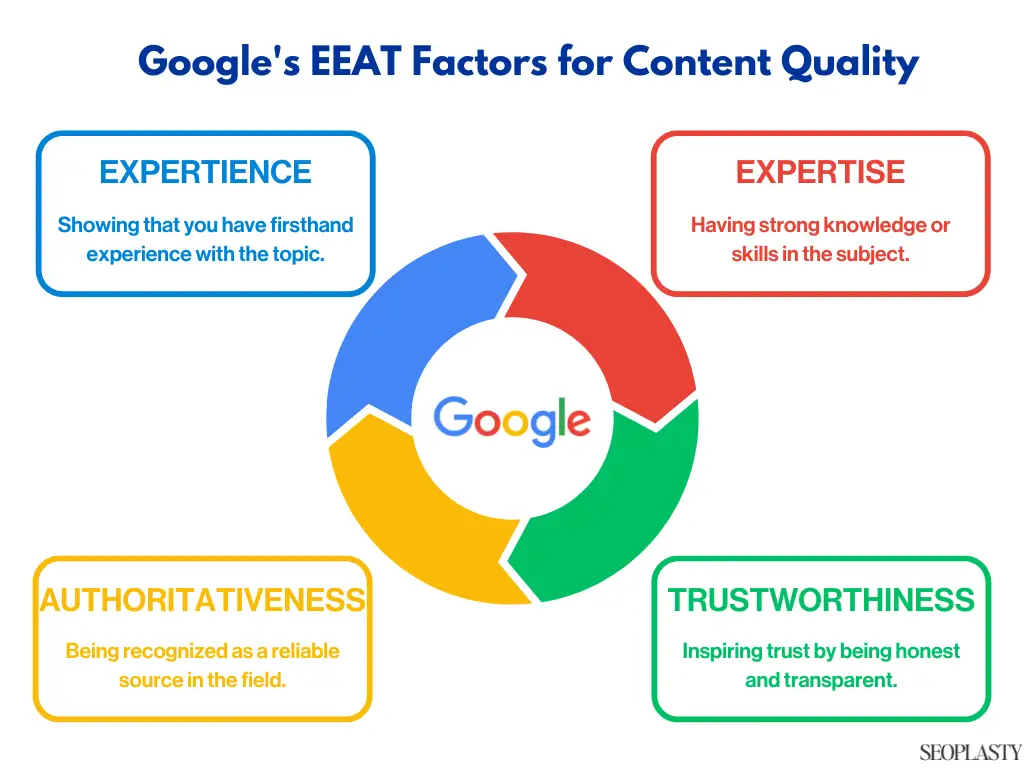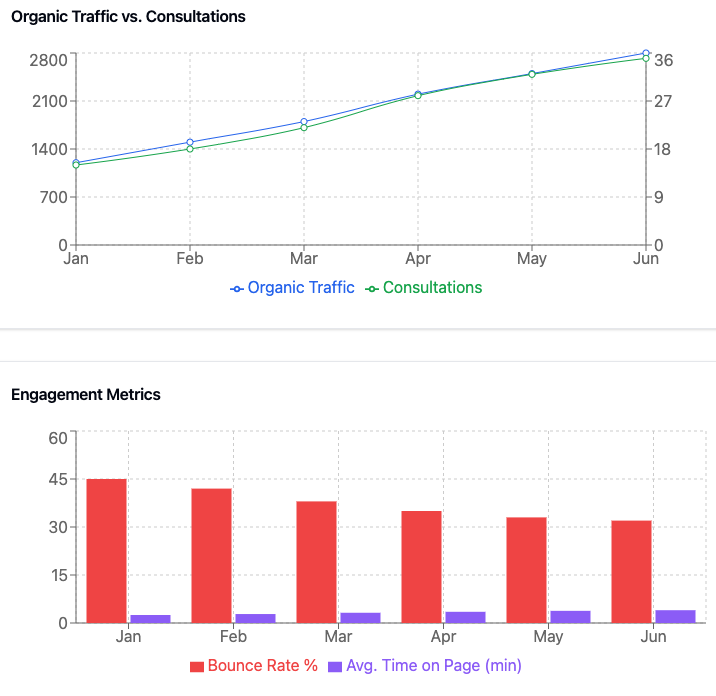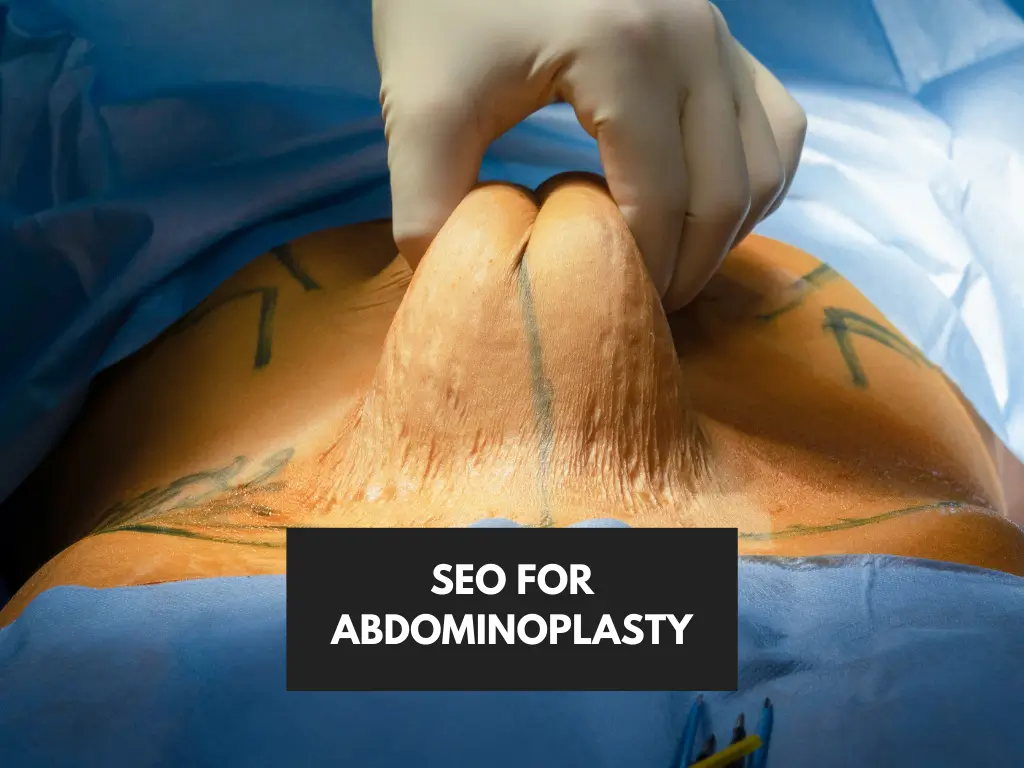Abdominoplasty, commonly known as a tummy tuck, is a popular procedure for patients looking to tighten abdominal muscles and remove excess skin for a smoother, firmer midsection. However, in today’s crowded digital landscape, simply offering abdominoplasty services is not enough. If you want to stand out, you need a targeted search engine optimization (SEO) plan to help potential patients find you online. This article will walk you through a comprehensive, easy-to-understand guide to SEO for abdominoplasty, without overwhelming you with complex marketing jargon.
We will break down what SEO really means for plastic surgeons, why it matters, and how to implement best practices for your abdominoplasty services. Our focus is on practical, patient-friendly methods that can help boost your online visibility. By the end, you will have a clearer idea of how to optimize your website and attract more consultations.
Understanding the Importance of SEO for Abdominoplasty
Patients Are Searching Online
Imagine a patient considering abdominoplasty. They likely start by typing phrases like “best tummy tuck surgeon in [City]” or “abdominoplasty recovery tips” into Google. If your website does not appear on the first page of these search results, you miss out on a large group of potential patients who are already motivated to learn more about tummy tuck procedures.
SEO is the practice of aligning your website with the way patients search online so that search engines like Google list your site among the top results. That visibility translates directly into more inquiries, consultations, and surgeries.
Standing Out in a Competitive Field
Abdominoplasty is often part of a “mommy makeover” or a standalone procedure that many plastic surgeons offer. Because there is a lot of competition, focusing on general keywords like “tummy tuck” might not be enough. You have to differentiate your practice by targeting more specific keywords, both local and procedure-related. For example, “extended abdominoplasty for significant weight loss in [City]” is more detailed and can help you reach a smaller but more serious audience ready for surgery.
Key Components of Abdominoplasty SEO
Well-Structured Website
A strong SEO strategy begins with a well-structured website. Just like a well-organized medical office helps patients feel more comfortable, a structured website helps Google and visitors quickly find what they need. You should have separate pages for:
- Abdominoplasty Overview: Explaining the basics of tummy tuck procedures.
- Before-and-After Photos: Showcasing visual transformations.
- Recovery and Aftercare: Providing guidelines for post-surgery healing.
- Patient Testimonials: Sharing real stories to build trust.
- Consultation Booking Information: Offering quick ways to schedule an appointment.
When these pages are clearly arranged in your menu and linked to each other in a logical way, search engines can crawl them more effectively. This structure also makes it simpler for visitors to navigate your site, increasing the likelihood they will stay and explore.
To illustrate the importance of a clear structure, here’s a video showing immediate tummy tuck results by Dr. Mark Deuber, a plastic surgeon based in Dallas. Such visual content, when properly integrated into your website’s architecture, helps patients understand the procedure’s process and potential outcomes.
On-Page Optimization
On-page SEO refers to the elements on your web pages that you can control. Here are some simple ways to optimize them:
- Titles and Headings: Each page should have a clear, concise title that includes relevant keywords, such as “Tummy Tuck in [City] | Abdominoplasty Procedure Overview.” Subheadings (H2, H3, H4) can break down the content and use variations of these keywords naturally.
- Keywords in Body Text: Sprinkle terms like “abdominoplasty,” “tummy tuck,” or “muscle tightening procedure” throughout your text, but keep it natural. You want to inform, not just stuff keywords.
- Meta Descriptions: These short descriptions appear under your page link in Google. A simple explanation like “Learn about our specialized tummy tuck procedures, recovery steps, and results in [City].” can encourage people to click.
- Alt Text for Images: When you showcase before-and-after photos, label them with descriptions like “Before and after extended abdominoplasty result.” This helps search engines read your images, and it improves accessibility for visually impaired users.
Local SEO for Abdominoplasty
Many patients prefer to find a plastic surgeon close to home or within driving distance. This is why local SEO matters. By optimizing your site for location-based keywords like “Abdominoplasty in [City or Neighborhood Name]”—you have a higher chance of appearing in local search results.
- Google Business Profile: Make sure your clinic’s Google Business Profile is claimed and complete. Upload photos of your practice, list your address and phone number, and encourage satisfied patients to leave reviews.
- Local Citations: Your clinic’s name, address, and phone (NAP) should be consistent across all platforms, including hospital directories, medical sites, and social media.
- Location Pages: If you serve multiple areas, consider separate pages targeting each location. For instance, “Tummy Tuck in Downtown [City]” or “Abdominoplasty Services in [City] Suburbs.”
For a broader look at how local SEO can boost your practice, you can explore the tips in Local SEO for Plastic Surgeons.
Although that guide covers various procedures, the principles for tummy tuck services are the same.
Creating Content That Builds Trust
Why Content Matters
Content is the heart of your SEO strategy. When potential patients land on your site, they need information about abdominoplasty: how it works, what it costs, how long the recovery takes, and any potential risks. High-quality content answers these questions and positions you as an expert who genuinely cares about patient education. This approach increases the likelihood they will reach out for a consultation.
Blog Posts and Articles
Posting blog articles not only helps your search rankings but also keeps your site fresh. Think about common patient concerns or questions, and write posts that address them:
- “Is a Tummy Tuck Right for Me? Key Questions to Ask”
- “Recovery Timeline: What to Expect After Your Abdominoplasty”
- “Mini vs. Full Abdominoplasty: Which Procedure Is Better for You?”
- “Combining Abdominoplasty with Other Cosmetic Treatments”
When you create new content regularly, you signal to Google that your site stays current. This can help you rank higher than practices that only update their websites once in a while.
Before-and-After Photos and Patient Stories
Abdominoplasty is a very visual procedure. Patients want to see potential outcomes. A well-organized before-and-after gallery can greatly enhance user engagement. Make sure each photo set includes:
- Clear images, taken under consistent lighting and angles.
- A brief description of the patient’s situation, for example: “This patient had significant abdominal muscle separation post-pregnancy.”
- How many weeks or months after surgery the ‘after’ photo was taken.
For guidelines on effectively showcasing transformations, check out Plastic Surgery Before and After Photos: The Ultimate Guide.
Although that article covers various procedures, the principles apply perfectly to your tummy tuck gallery.
Video Testimonials and Educational Clips
Video content can be a game-changer for building trust. Short clips of patient testimonials or animated explanations of the abdominoplasty process can answer questions quickly and make your practice feel approachable. Keep these videos concise, around two to three minutes, so they are easy to watch without taking too much time.
If you want a more in-depth approach to video marketing, consider reading Video Marketing Plastic Surgery Patients Guide.
Even short clips can significantly improve user engagement and showcase the human side of your practice.
Here’s another example of effective video testimonials from Donaldson Plastic Surgery & Aesthetic Solutions. Patient testimonial videos like this one help build trust and showcase real experiences with abdominoplasty procedures, while keeping content authentic and engaging for potential patients.
Technical SEO Essentials
Fast Loading Speeds
Patients searching for “tummy tuck near me” do not want to wait around for slow pages to load. If your site is sluggish, they are more likely to abandon it. You can:
- Compress and resize images so they do not drag down your site speed.
- Use a Content Delivery Network (CDN) to serve your files faster around the world.
- Minimize code by removing unnecessary scripts or plugins that slow down your site.
Mobile-Friendly Design
Many patients research plastic surgery on their phones. If your site looks cluttered or is hard to navigate on a small screen, they will lose confidence quickly. A mobile-friendly, responsive design adjusts automatically to different device sizes. To learn more about designing a user-friendly site that works on mobile, you can read Mobile-Friendly Website Plastic Surgeon Guide.
Security and HIPAA Compliance
While abdominoplasty details may not always involve sensitive health data like some other medical procedures, you should still protect any personal information patients share. Encrypt your site with HTTPS and consider reviewing HIPAA-Compliant SEO for Plastic Surgery Websites
for more guidance, especially if you collect any health-related details through forms. Security also helps with SEO because search engines often favor secure websites.
Building Authority and Trust (E-E-A-T)
Google looks at your site’s overall trustworthiness, especially in medical fields. The concept of E-E-A-T (Experience, Expertise, Authoritativeness, Trustworthiness) is a framework that helps Google determine which sites offer reliable content. As a plastic surgeon, you already have the medical expertise—SEO is about showcasing it.
- Show Credentials: List your professional qualifications, certifications, and years of experience on your site.
- Feature Real Patient Testimonials: Let patients share their honest experiences in detail. Genuine feedback is more convincing than generic praise.
- Link to Reputable Sources: If you reference studies or statistics about abdominoplasty, link to official medical organizations or credible sources.
- Display Clear Contact Info: A physical address, phone number, and email show you are a real clinic, not just an online entity.
For more tips on how to demonstrate E-E-A-T for your abdominoplasty pages, you may visit E-E-A-T Optimization Plastic Surgery Medical Authority Guide.

Leveraging Local Reviews and Testimonials
Why Reviews Matter
Personal stories from satisfied abdominoplasty patients can be a turning point for someone who is still on the fence. Potential patients often check platforms like Google Business Profile or RealSelf to see what others say about your practice. A collection of positive reviews can reassure them about their choice.
Encouraging Patient Feedback
Politely ask happy patients to share their experiences online. A post-operative email with a direct link to your review page can simplify the process. Avoid pressuring them or offering incentives that may raise ethical or regulatory concerns. Instead, emphasize how their story can guide others in making informed choices about tummy tuck procedures.
Responding to Reviews
Take the time to reply to all reviews, positive or negative. Thank positive reviewers for their kindness, and if you receive a negative comment, offer a calm, professional response. Apologize if necessary and provide a phone number or email to discuss the issue privately. This public display of compassion can help rebuild trust.
Tracking and Adjusting Your Abdominoplasty SEO
Key Metrics to Watch
- Organic Traffic: The number of visitors who find your abdominoplasty pages through Google.
- Bounce Rate: How many people leave after viewing just one page. A high bounce rate might mean they did not find what they were looking for.
- Time on Page: The longer visitors stay, the more likely they are truly interested in your content.
- Conversions/Consultation Requests: Ultimately, the best measure of success is how many website visitors become consultation bookings.

Tools to Help
- Google Search Console: Shows which keywords bring visitors to your pages and alerts you to any technical issues.
- Google Analytics: Helps you track user behavior, top-performing pages, and conversion paths.
- Rank Trackers (e.g., Semrush or Ahrefs): Let you see where you rank for key terms like “tummy tuck in [City].”
Continuous Improvement
SEO is not a set-it-and-forget-it task. Search engines update their algorithms frequently, and patient needs evolve. You should:
- Review your content every few months to make sure it is up to date.
- Add fresh material like new before-and-after cases, patient testimonials, or Q&A sections.
- Monitor your competitor activity: If another surgeon in your city is outranking you for key abdominoplasty terms, analyze what they are doing differently.
Building a Comprehensive Patient Journey
Abdominoplasty patients often have a journey that starts with initial research and ends with post-operative care. Your site can reflect this journey:
- Awareness Stage: Introductory content explaining what abdominoplasty is.
- Consideration Stage: Detailed pages comparing different tummy tuck techniques and potential risks.
- Decision Stage: Testimonials, before-and-after galleries, and scheduling forms.
- Aftercare and Follow-Up: Blog posts on recovery, scar care, and safe exercise routines.
If you want a deeper dive into how to map your patient’s decision process, you can consult the SEO Patient Journey Mapping for Plastic Surgeons
article for a structured approach to guiding patients from discovery to surgery.
Avoiding Common Abdominoplasty SEO Mistakes
Keyword Stuffing
Using the word “abdominoplasty” 50 times on one page will not boost your rank. Search engines see this as spammy behavior. Instead, vary your terms with synonyms like “tummy tuck,” “abdominal contouring,” or “muscle tightening procedure.”
Duplicate Content
Be sure your abdominoplasty pages offer unique information rather than just copying and pasting from medical sources or reusing the same text across multiple pages. Google prefers original, high-quality content tailored to your audience.
Overly Technical Language
Remember that patients are not always familiar with medical terms. Stick to plain, easy-to-read explanations, and define any technical phrases. This approach also makes your content more likely to appear in “featured snippets” in Google, where short answers to common questions are highlighted.
Neglecting the “User Experience”
SEO is not only about keywords and code. It is also about how your site “feels” to a visitor. If your website is cluttered, has confusing navigation, or too many pop-ups, people may leave quickly. That high bounce rate can tell Google your site is not meeting user expectations, potentially lowering your rank.
Bringing It All Together
SEO for abdominoplasty is a long-term investment in growing your practice. By focusing on local keywords, creating patient-centered content, and maintaining a user-friendly website, you are likely to see more inquiries for tummy tuck procedures. The goal is not merely attracting a random audience, but rather connecting with potential patients who are truly interested and ready to book a consultation.
To recap:
- Optimize On-Page: Use relevant terms, clear headings, and meta descriptions.
- Leverage Local SEO: Claim your Google Business Profile and maintain consistent contact info.
- Create Valuable Content: Publish helpful articles and videos that build trust and authority.
- Monitor Technical Health: Keep pages loading quickly, working well on mobile, and secure with HTTPS.
- Track Results and Adapt: Follow key metrics (traffic, conversions) and update your strategy regularly.
By implementing these steps, you set yourself apart from competitors who rely on generic marketing. An effective SEO strategy brings you into focus for patients actively searching for abdominoplasty, positioning your practice as the go-to expert in your region.
When done well, SEO becomes part of your broader patient experience, reflecting the same care and expertise you provide in the operating room. If you commit to these principles, you will likely see a steady rise in online inquiries, higher-quality leads, and a thriving, patient-centric abdominoplasty practice.

